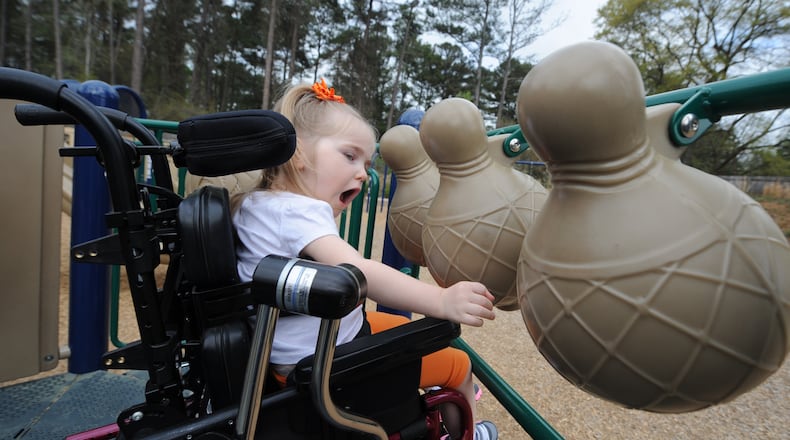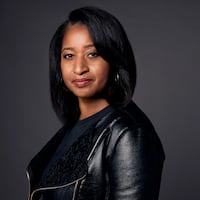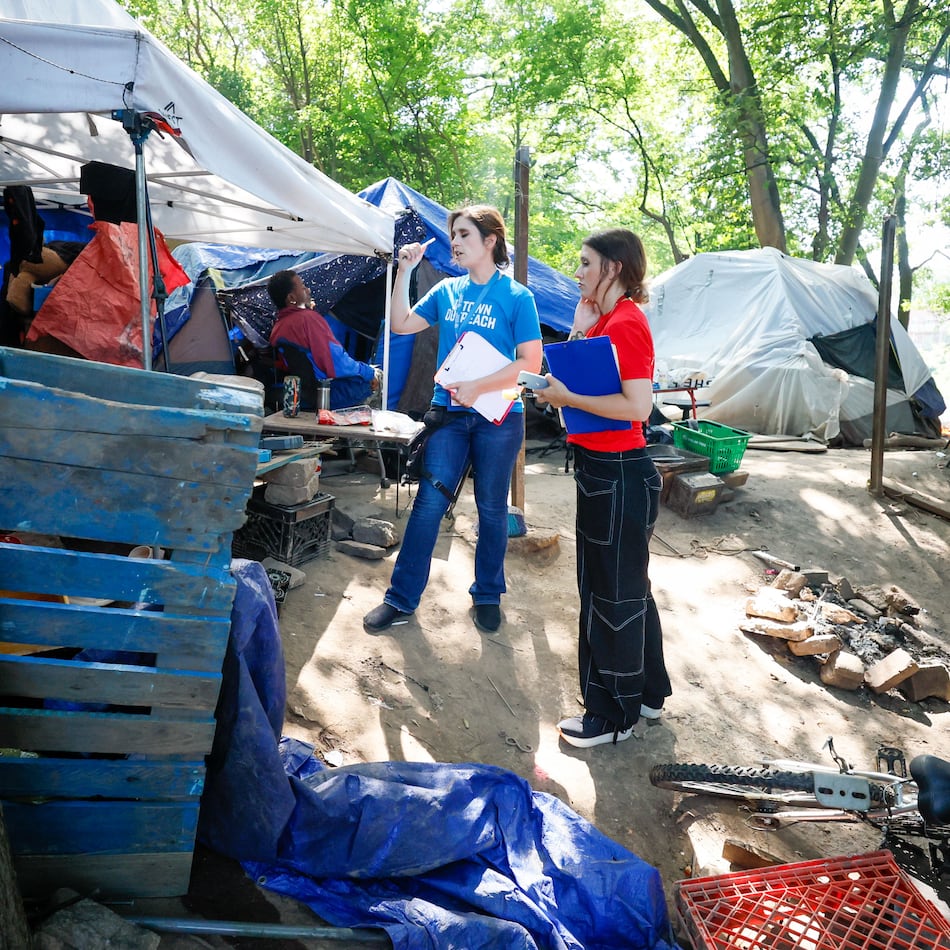A chemical burn accident left Margaret Comin blind at two-and-a-half years old.
Her mother, a progressive thinker for the mid-20th century, sent her to public school rather than a school for the blind.
Comin was one of two blind children at the Duval County schools in Florida. Her mother reasoned that her daughter would eventually have to live in the sighted world, so she may as well learn to adapt at a young age.
In school, Comin was taught braille and typing. By the time she graduated from a private high school where she was the only blind student, Comin had learned how to be resourceful.
She would graduate from Florida State University, get married and move to Georgia in the early 1980s. Comin became a mother of two and worked for many years at a state agency.
Even when she had partial vision restored in her left eye thanks to corneal transplants in 1984 and after losing vision in the same eye, she had it restored again in 2008, Comin often still relied on her white cane to navigate public spaces. Now, at age 69, she is totally blind.
After all these years, she still has challenging moments. Public bathrooms, the kind with multiple stalls, can be particularly confusing.
“When you walk in a public bathroom with a cane, you are sort of in outer space,” said Comin of Marietta.
In those situations, her husband walks her to the door of the ladies room and then she is on her own. She feels shy about tapping her cane around and possibly hitting someone or aiming it under an occupied stall, she said.
When she leaves the stall, there is the issue of soap dispensers and hand dryers to worry about. They can be impossible to find, Comin said.
With only 2.4% of Americans considered totally blind, Comin knows she is part of a small group. But that shouldn’t make her invisible.
Credit: Image provided by Margaret Comin
Credit: Image provided by Margaret Comin
Like Comin, people who are blind have likely learned to navigate the sighted world through the force of will, tenacity and resourcefulness. But when people with disabilities can’t overcome specific challenges, it should be our responsibility as a society to help them.
In a recent essay published in Time magazine, Rebekah Taussig wrote about the challenges of air travel with her wheelchair. It was also the first time she and her partner were flying with their toddler. She described the feelings of disempowerment she felt in a space that can legally disregard her needs because the Americans with Disabilities Act of 1990 (ADA) does not apply to air travel.
The author also noted how quick others are to shrug and assume nothing can be done to make it easier.
“What challenges are my individual problems to fix and what messes remain our collective responsibility?” she wrote. “… it dawned on me how slow the world has been to imagine someone like me as a participant.”
Katie Rodriguez Banister, president of St. Louis-based Access-4 All, said navigating daily life for her is a group effort. Banister survived an automobile accident in 1990 at age 25 that left her paralyzed from the chest down. As ADA made its debut, Banister was in rehabilitation and working her way back to living independently.
“Going out with a disability, you lose spontaneity. You can’t just go anywhere,” she said.
Over the years, she has seen much more progress in attitudes toward accessibility than when she was first injured, but there are so many hidden challenges that people with disabilities continue to experience.
“ADA is not the end-all be-all, and it is not OK to just build a ramp and that is it,” Banister said. “There are so many other disabilities out there, visible and invisible.”
Banister noted efforts made by Washington University’s Department of Physiology to do its own assessment of campus accessibility. There were 64 buildings on Danforth Campus marked by the University as having inadequate accessibility features. The university developed a checklist that went beyond ADA compliance by asking people with disabilities what would be most helpful to them in creating accessibility, Banister said.
Closer to home, Georgia Tech’s Center for Inclusive Design and Innovation has become a leader in promoting technological innovations, products and services to address the needs of people with disabilities by focusing on solutions to problems that disabled people have identified.
There is a good chance that innovations or accommodations that benefit people with disabilities are likely to benefit everyone else as well. Bathrooms designed for people with wheelchairs or blind people would naturally be larger and therefore easier for families or larger individuals to navigate.
Prior to the pandemic, telehealth and remote work were reserved for special circumstances. Now those accommodations represent the future because we have learned how they can benefit the general population.
When AMC Theaters added onscreen captioning at 240 U.S. locations in October, it was a big win for accessibility advocates, but it was also a win for millennials and Gen Zers who have developed an affinity for watching movies with captions and subtitles.
Comin said she recognizes that certain accommodations can’t always be made. She isn’t suggesting that every restaurant or store or public space install single stall bathrooms, but she does wish that more people were sensitive to the needs of individuals with disabilities.
“I think people mean well in the world,” Comin said. “We recognize how helpful people want to be, but if you are in a public restroom and a blind person comes in with a cane, you can just say, ‘Can I help you?’”
Read more on the Real Life blog (www.ajc.com/opinion/real-life-blog/) and find Nedra on Facebook (www.facebook.com/AJCRealLifeColumn) and Twitter (@nrhoneajc) or email her at nedra.rhone@ajc.com.
About the Author
The Latest
Featured



